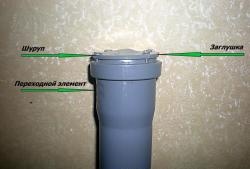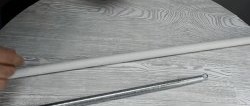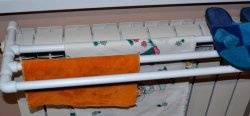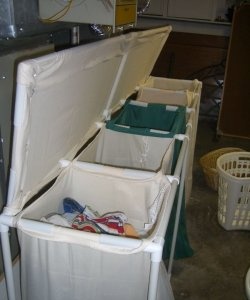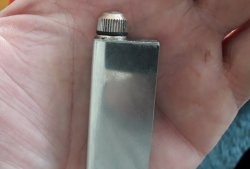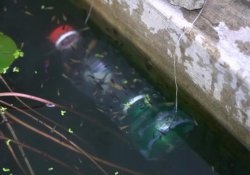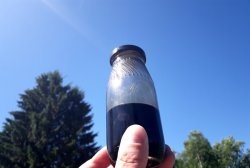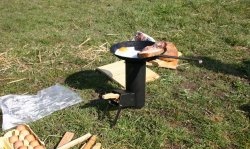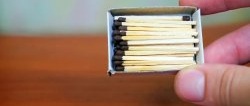How to make a hand pump for pumping water out of PVC pipes
While floating on a boat, water gradually fills it; it is not always possible to dry the bottom with a cloth due to design features. There are special devices for sale for such purposes, but they are quite expensive. There is a simple way to make a hand pump; it will only require 150–200 rubles and 1–2 hours.
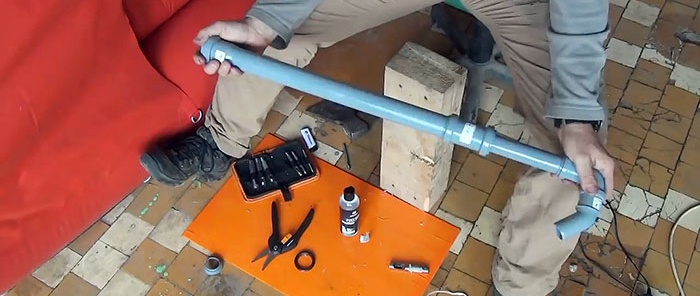
You need two plastic pipes for plumbing 50 cm long with a diameter of 40 mm and 32 mm, two plugs for them, a coupling with a diameter of 40 mm, a 45-degree angle with a Ø 32 mm and a 90-degree angle also with a diameter of 32 mm. Additional sealing is done with a special rubber bushing. The valves are made of a sheet of rubber or other waterproof material 1–2 mm thick. The preparation of plastic elements is done with metal scissors. Additionally, you need to prepare a piece of twine, silicone grease and a lighter. The plug is glued with a heat gun or any waterproof glue.

Connect the two corners; if the rubber seal is tight, use a special lubricant.
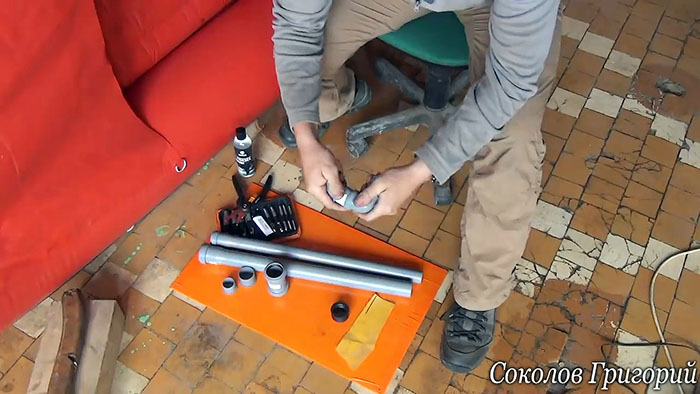
A pipe with a diameter of 40 mm is the barrel, and a pipe with a diameter of 32 mm is the pump piston. The thickening on the thin one does not allow it to enter the trunk; it must be cut off with metal scissors. If the pipes are from unscrupulous manufacturers, then they are made of low-quality plastic and crack. Work carefully and remove the rubber seal from the socket before cutting.
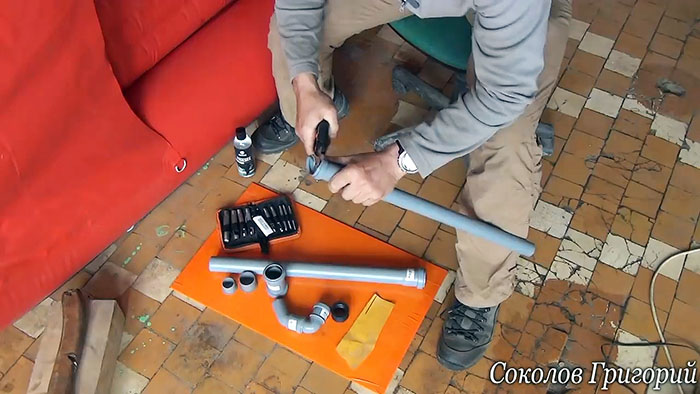
Insert the pipes into each other and check the stroke density, the efficiency of the pump depends on this.
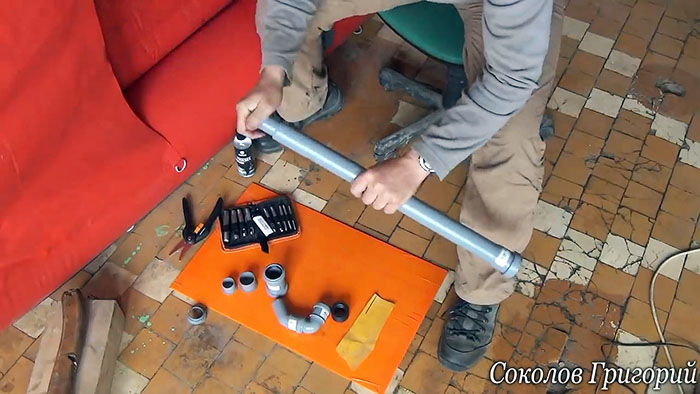
Make two caps from the plugs, one for the piston, the second for the pump barrel. To make it you need to have rubber or tarpaulin. Place the material on a flat surface and press the plug firmly against it. An outline of a valve should appear. Using scissors, carefully cut out the workpiece.
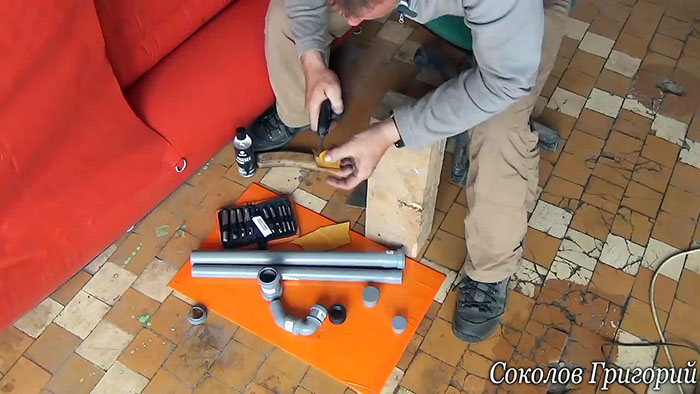
There is no need to make it perfectly round, the main thing is that its diameter fits freely inside the pipe.

Now you need to fix the valve and prepare a hole for water inlet/outlet. They can be made with ordinary scissors or the edge of a knife, but it is much better to work with a notch.
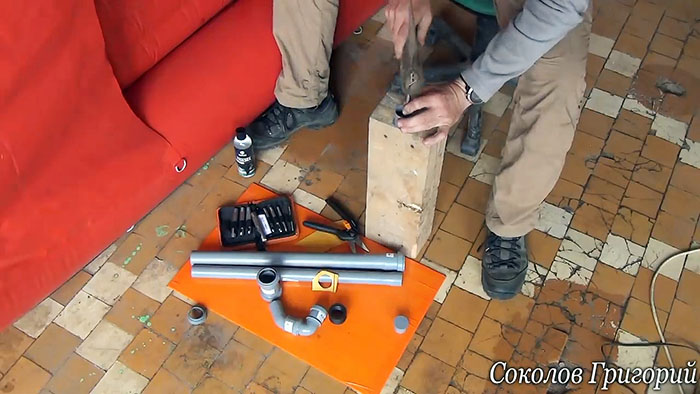
Insert the valve into the plug and, closer to the edge, punch a small hole in both parts to secure it. Using a notch of larger diameter, punch a second hole only in the water plug, position it opposite the first. If there is no large notch, then it can be enlarged with a knife or scissors.
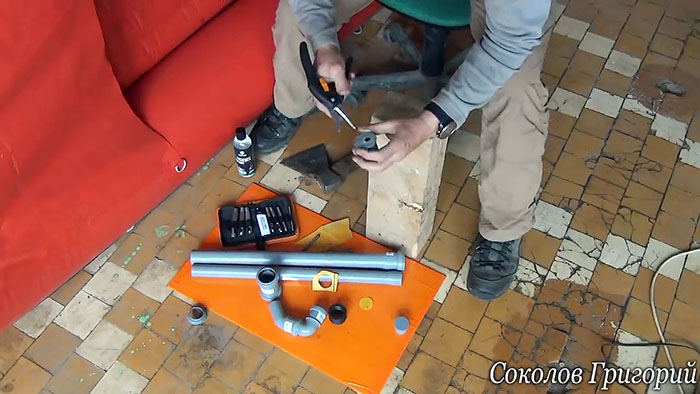
Attach the valve to the plug. Cut a small piece 1–2 cm long from synthetic twine and use a lighter. Use your fingers to sharpen the ends of the twine, being careful not to get burned. Make a mushroom (rivet) on one side. To do this, heat the end and press it against the metal part of the lighter.
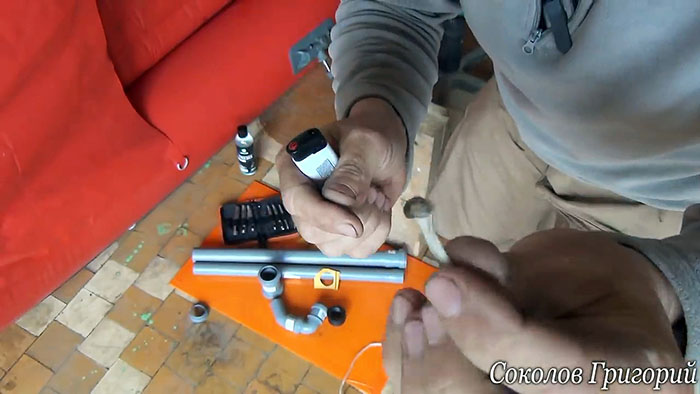
Place the valve on the mushroom, insert it into the plug, and insert the end of the rope into the small hole.From the reverse side, cut off the excess rope, melt it and secure it to the surface of the plug.
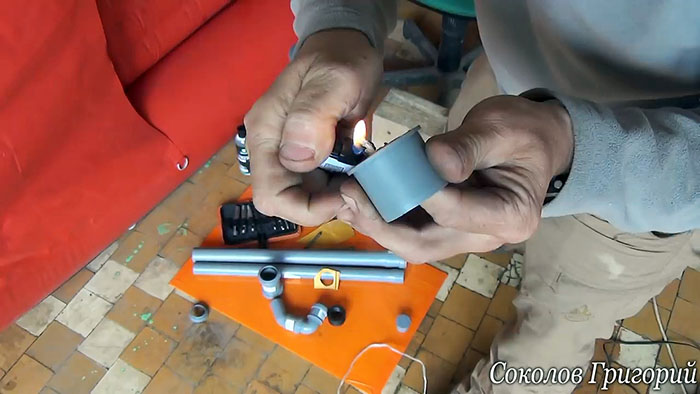
Check the functionality, blow into the plug from both sides, the valve should come off to allow air to pass through and then close tightly.
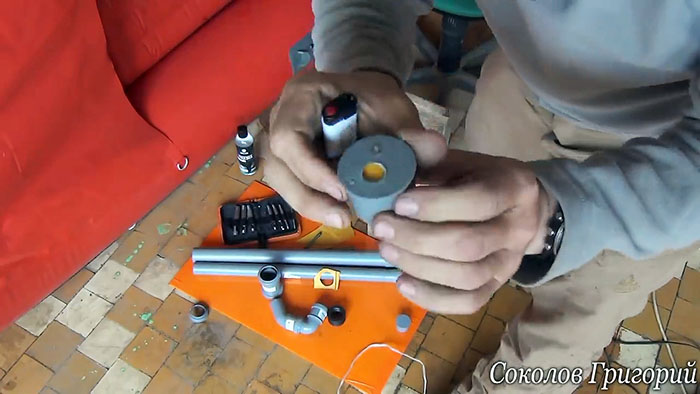
Using the same algorithm, you need to make a second valve. Insert the large valve into the socket of a pipe with a diameter of 40 mm, fixing it with hot glue, this part is ready.
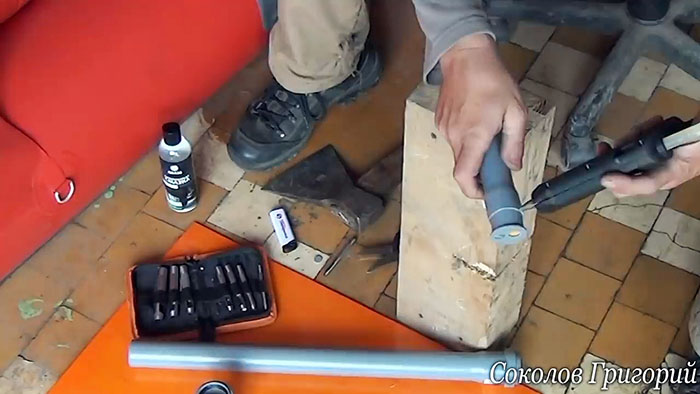
The seal has been removed from the small tube; to seal it, the plug should first be coated with silicone hot melt adhesive. After hardening, use scissors to remove the protruding parts of the connection.
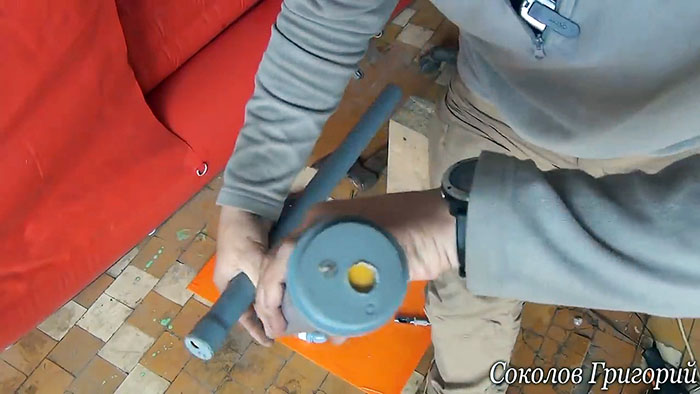
Assemble the pump housing elements and check the piston stroke. It should be tight, but without jamming.
Seal where the piston rod exits the barrel. This is done using a coupling and a special rubber seal. The seal allows you to make hermetically sealed connections between pipes of various diameters; this is exactly the situation we have.
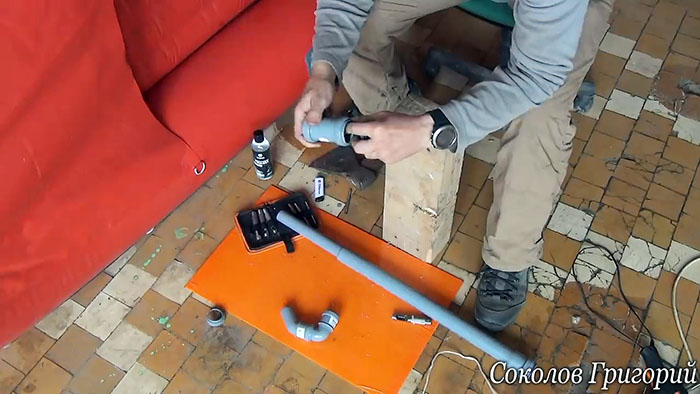
Remove the standard rubber seal from the coupling. Cut off one petal from the special ring; it reduces the nominal diameter of the hole too much, and the pump will jam. Remove excess length with scissors.
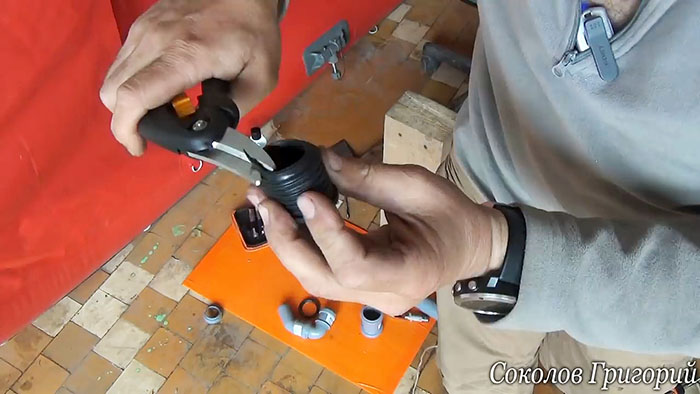
Insert the prepared seal into the coupling - the adapter for connecting pipes of different diameters is ready.
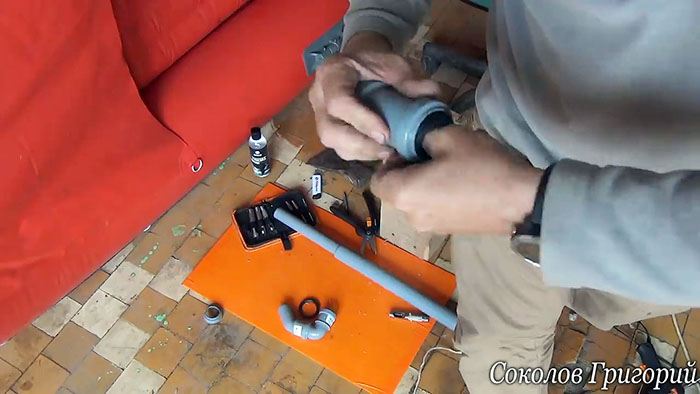
Try on all the details. It is necessary to ensure that the piston does not reach the beginning of the bell on the barrel pipe. Place the parts on one line and take accurate measurements when assembled. In our case, we need to reduce the length of the trunk by 2.5–3 cm, cut off the unnecessary piece.
Place the adapter on the end of the small diameter pipe, assemble the pump and put the coupling on the larger diameter pipe.
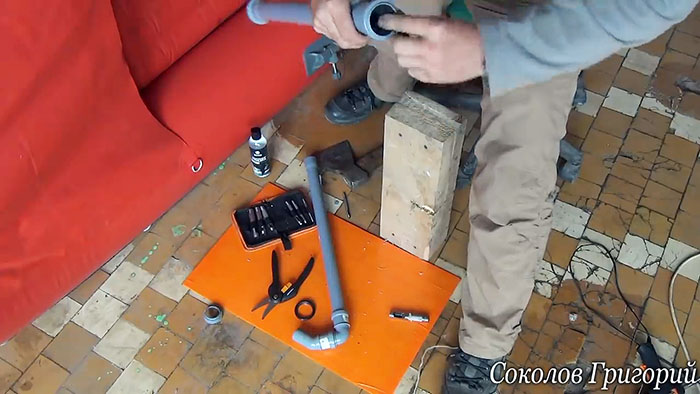
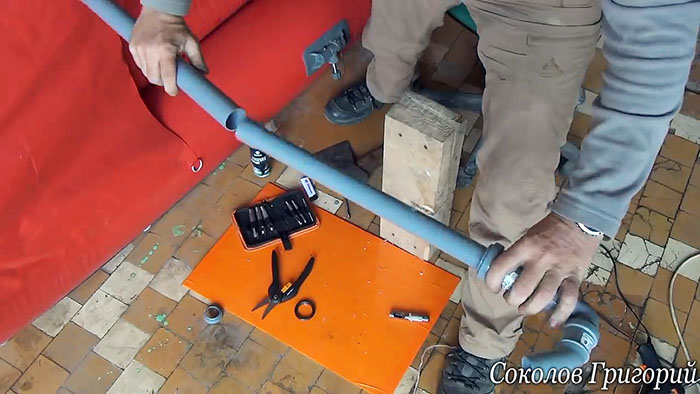
The piston stroke is very tight on dry rubber seals; lubricate the surfaces with silicone grease. Immediately remove stickers with price tags and ensure smooth piston movement.
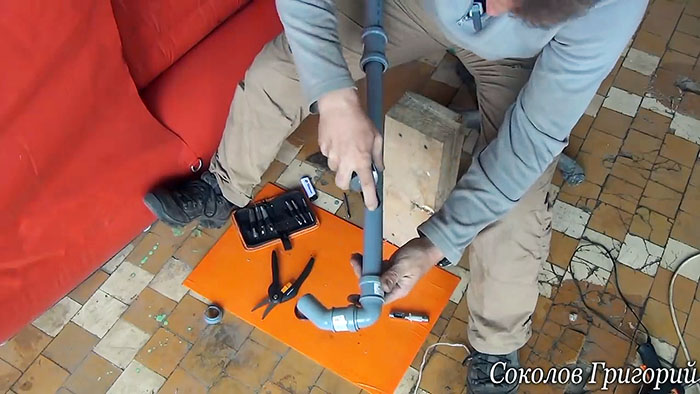
The device is ready, check its functionality. Pump water from one bucket to another, if everything is normal, then you can take the pump with you on a boat trip.
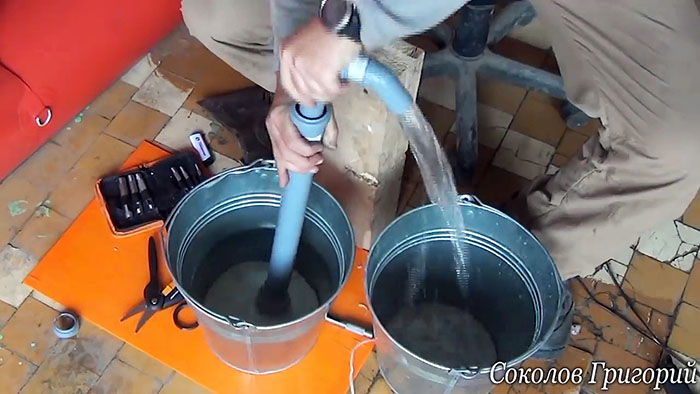
Such a pump can also be used in the country for pumping various liquids. Practice shows that it is not worth increasing the diameter of pipes to increase productivity - it is too difficult to work with the device.

Tools and Parts
You need two plastic pipes for plumbing 50 cm long with a diameter of 40 mm and 32 mm, two plugs for them, a coupling with a diameter of 40 mm, a 45-degree angle with a Ø 32 mm and a 90-degree angle also with a diameter of 32 mm. Additional sealing is done with a special rubber bushing. The valves are made of a sheet of rubber or other waterproof material 1–2 mm thick. The preparation of plastic elements is done with metal scissors. Additionally, you need to prepare a piece of twine, silicone grease and a lighter. The plug is glued with a heat gun or any waterproof glue.

Manufacturing technology
Connect the two corners; if the rubber seal is tight, use a special lubricant.

A pipe with a diameter of 40 mm is the barrel, and a pipe with a diameter of 32 mm is the pump piston. The thickening on the thin one does not allow it to enter the trunk; it must be cut off with metal scissors. If the pipes are from unscrupulous manufacturers, then they are made of low-quality plastic and crack. Work carefully and remove the rubber seal from the socket before cutting.

Insert the pipes into each other and check the stroke density, the efficiency of the pump depends on this.

Make two caps from the plugs, one for the piston, the second for the pump barrel. To make it you need to have rubber or tarpaulin. Place the material on a flat surface and press the plug firmly against it. An outline of a valve should appear. Using scissors, carefully cut out the workpiece.

There is no need to make it perfectly round, the main thing is that its diameter fits freely inside the pipe.

Now you need to fix the valve and prepare a hole for water inlet/outlet. They can be made with ordinary scissors or the edge of a knife, but it is much better to work with a notch.

Insert the valve into the plug and, closer to the edge, punch a small hole in both parts to secure it. Using a notch of larger diameter, punch a second hole only in the water plug, position it opposite the first. If there is no large notch, then it can be enlarged with a knife or scissors.

Attach the valve to the plug. Cut a small piece 1–2 cm long from synthetic twine and use a lighter. Use your fingers to sharpen the ends of the twine, being careful not to get burned. Make a mushroom (rivet) on one side. To do this, heat the end and press it against the metal part of the lighter.

Place the valve on the mushroom, insert it into the plug, and insert the end of the rope into the small hole.From the reverse side, cut off the excess rope, melt it and secure it to the surface of the plug.

Check the functionality, blow into the plug from both sides, the valve should come off to allow air to pass through and then close tightly.

Using the same algorithm, you need to make a second valve. Insert the large valve into the socket of a pipe with a diameter of 40 mm, fixing it with hot glue, this part is ready.

The seal has been removed from the small tube; to seal it, the plug should first be coated with silicone hot melt adhesive. After hardening, use scissors to remove the protruding parts of the connection.

Assemble the pump housing elements and check the piston stroke. It should be tight, but without jamming.
Seal where the piston rod exits the barrel. This is done using a coupling and a special rubber seal. The seal allows you to make hermetically sealed connections between pipes of various diameters; this is exactly the situation we have.

Remove the standard rubber seal from the coupling. Cut off one petal from the special ring; it reduces the nominal diameter of the hole too much, and the pump will jam. Remove excess length with scissors.

Insert the prepared seal into the coupling - the adapter for connecting pipes of different diameters is ready.

Try on all the details. It is necessary to ensure that the piston does not reach the beginning of the bell on the barrel pipe. Place the parts on one line and take accurate measurements when assembled. In our case, we need to reduce the length of the trunk by 2.5–3 cm, cut off the unnecessary piece.
Place the adapter on the end of the small diameter pipe, assemble the pump and put the coupling on the larger diameter pipe.


The piston stroke is very tight on dry rubber seals; lubricate the surfaces with silicone grease. Immediately remove stickers with price tags and ensure smooth piston movement.

The device is ready, check its functionality. Pump water from one bucket to another, if everything is normal, then you can take the pump with you on a boat trip.

Conclusion
Such a pump can also be used in the country for pumping various liquids. Practice shows that it is not worth increasing the diameter of pipes to increase productivity - it is too difficult to work with the device.
Watch the video
Similar master classes
Particularly interesting
Comments (1)

